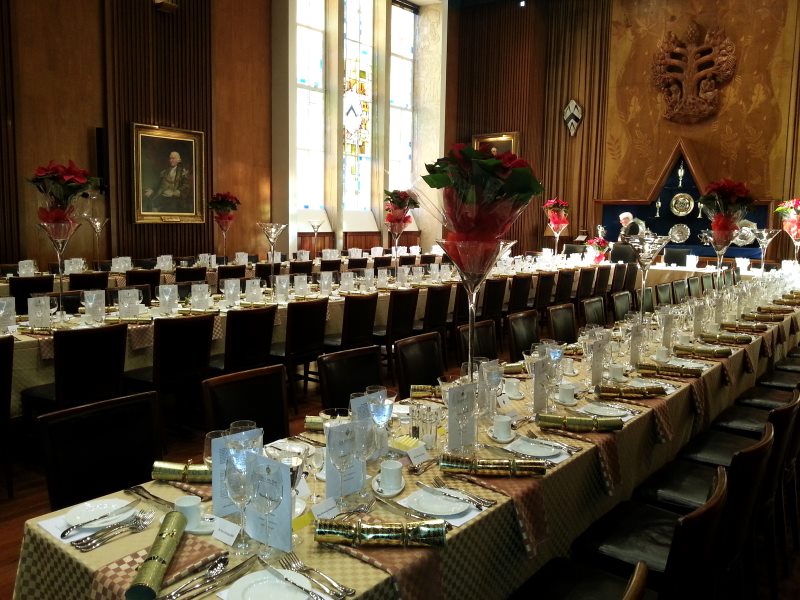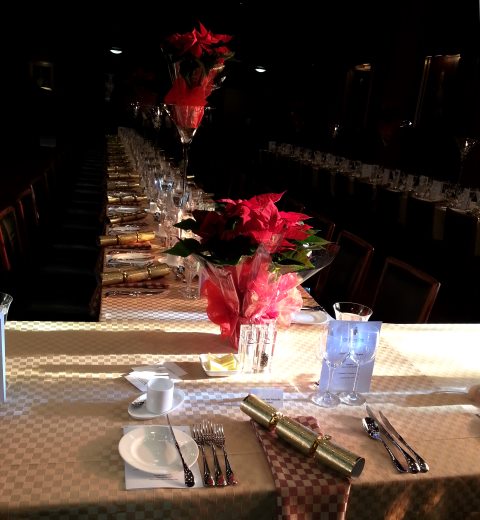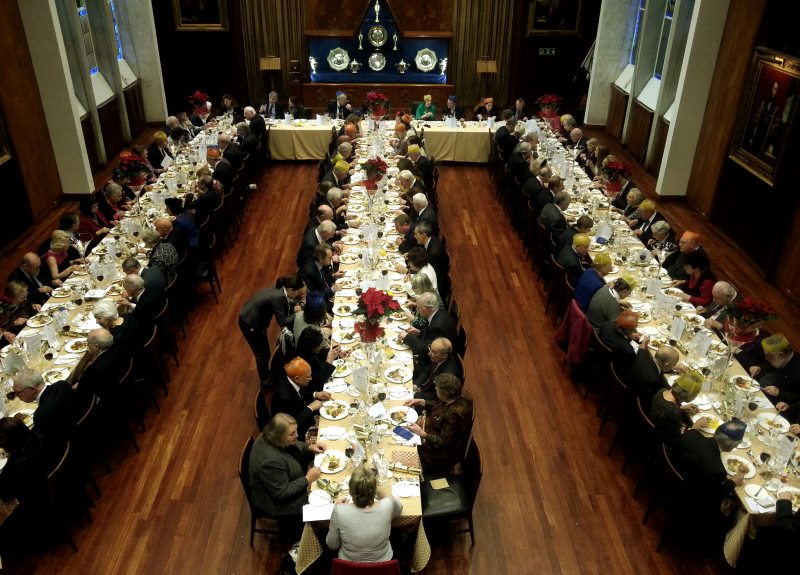
Tel: 020 7620 1818 email: cookandbutler@btconnect.com
City Livery Club
www.cityliveryclub.com
Civic Banquet
9th September 2024, Proof House, London
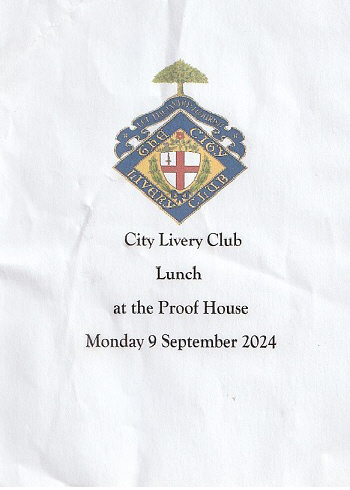
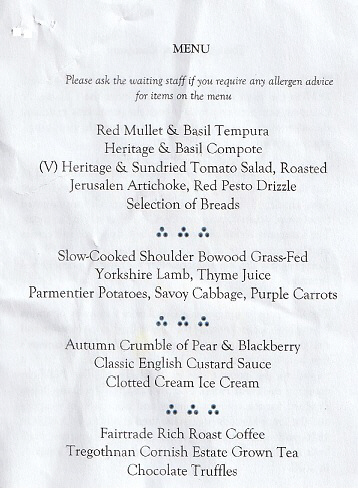
Civic Banquet
15th July 2024, Stationers' Hall, London
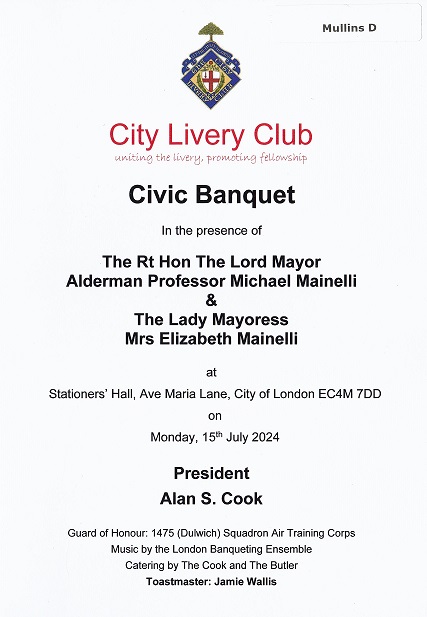
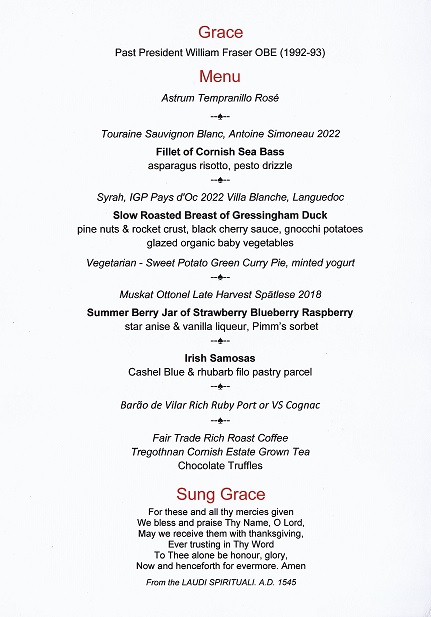
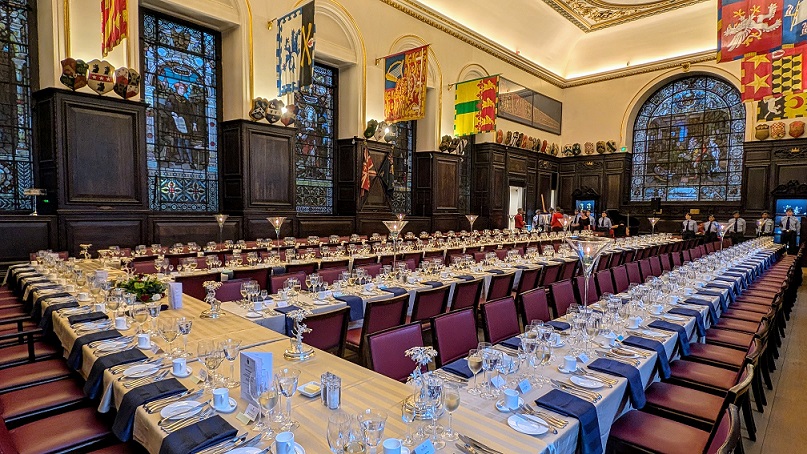
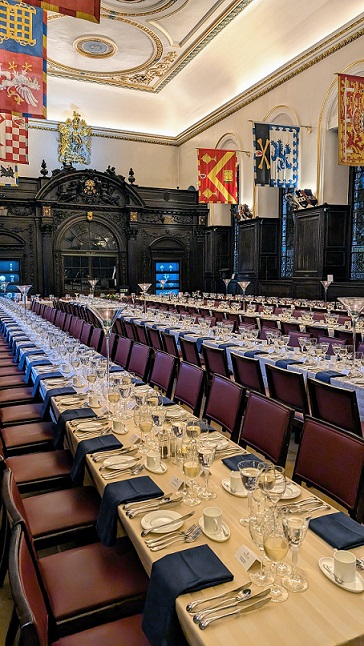


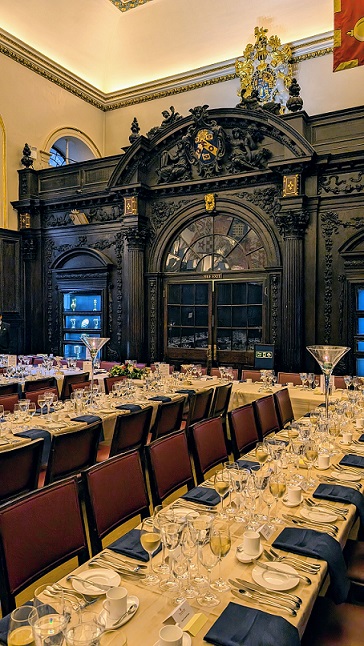
![]()
The Best of Switzerland, Swiss Wine Tasting
15th May 2024, Cutlers' Hall, London

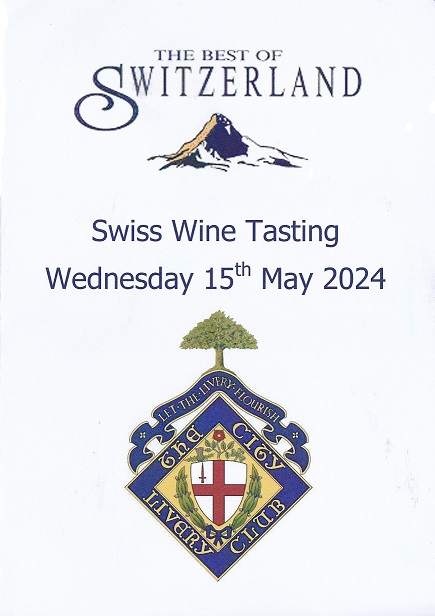
![]()
Installation Dinner
2nd November 2023, Cutlers' Hall, London
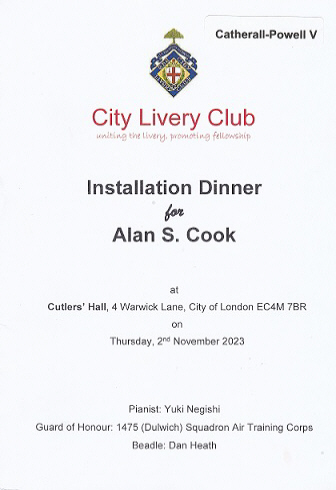
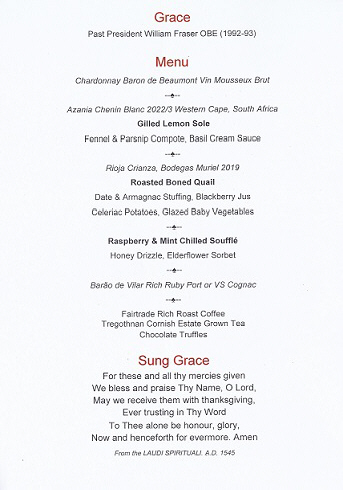
![]()
Aero Section Luncheon
March 2016, Guildhall Club
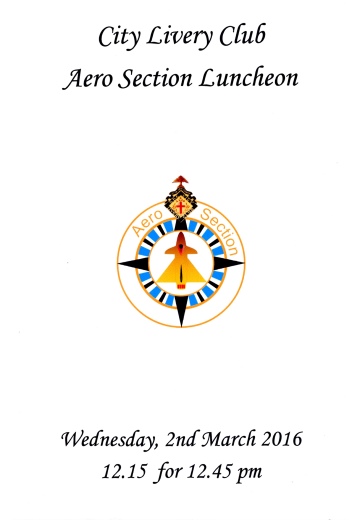
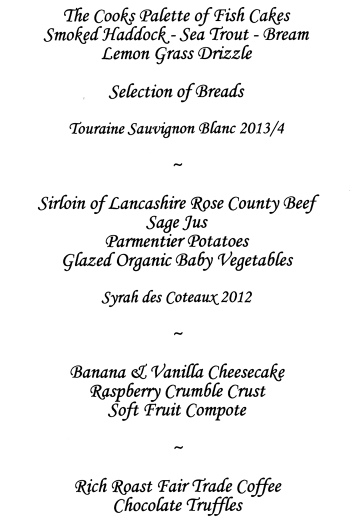

Christmas Luncheon
December 2014, Trinity House, London
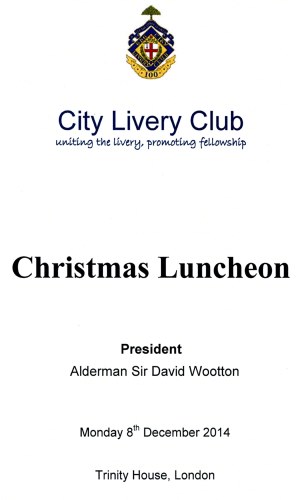
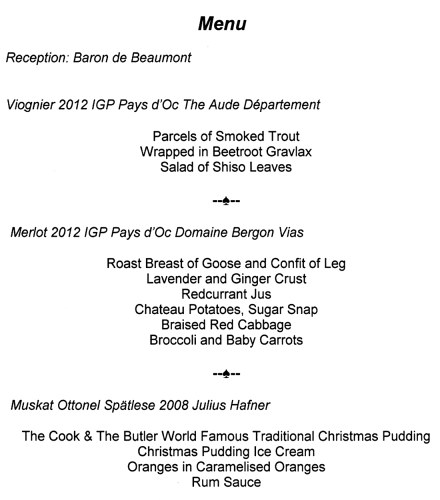

Installation Dinner
October 2014, Carpenters' Hall, London
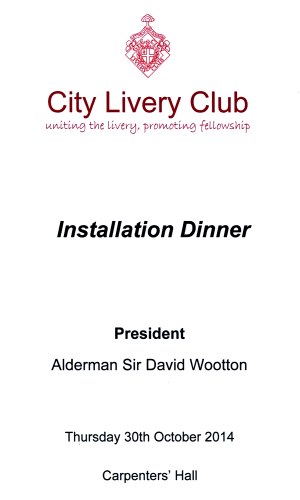
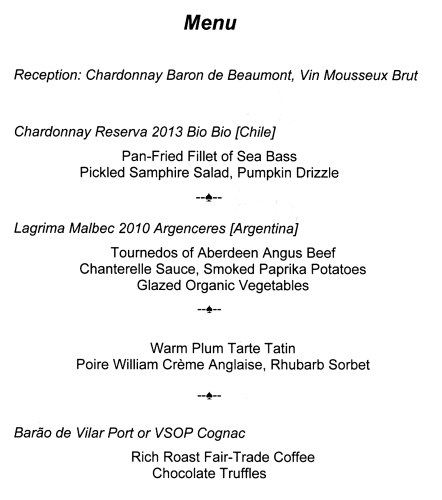

Centenary Banquet
June 2014, Guildhall, City of London
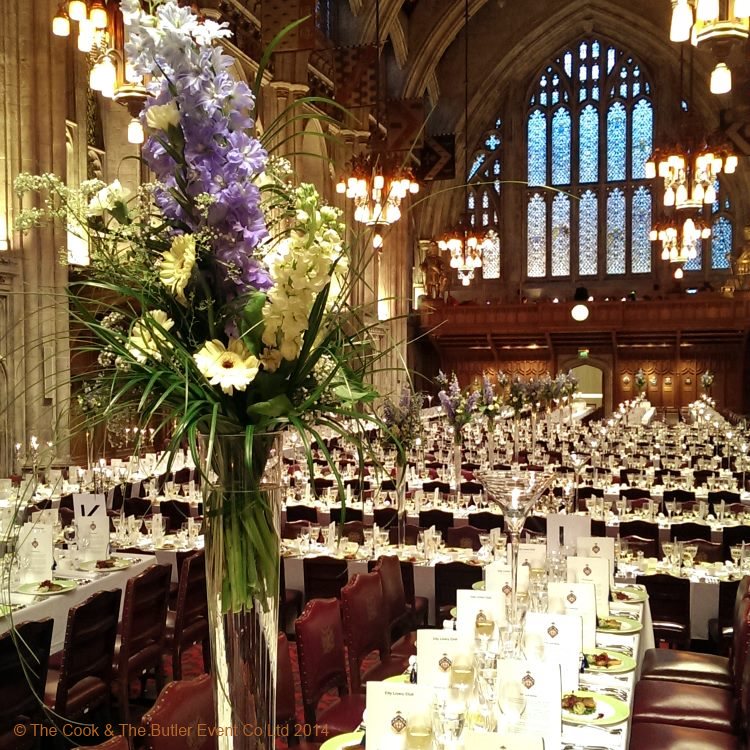
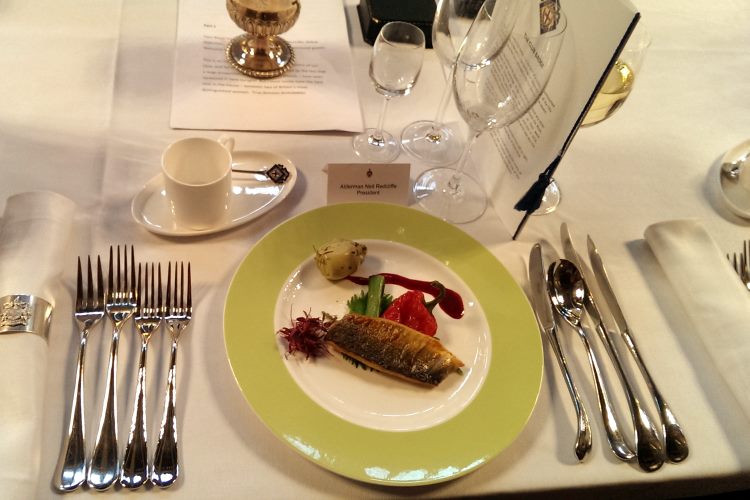
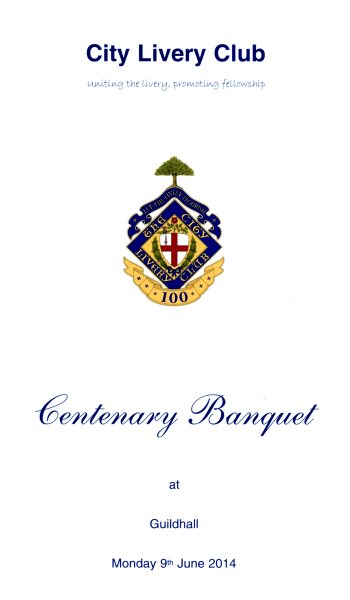
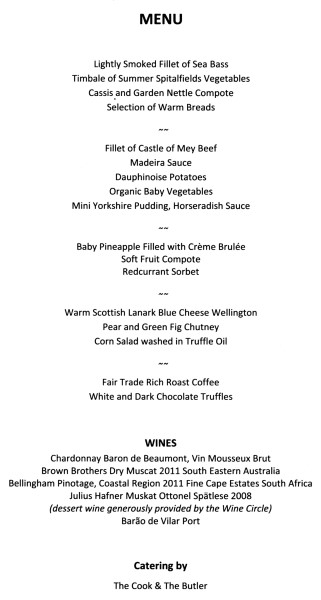
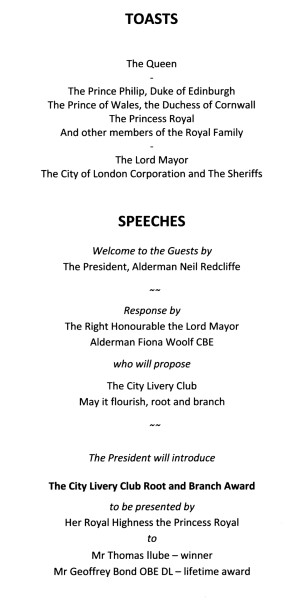
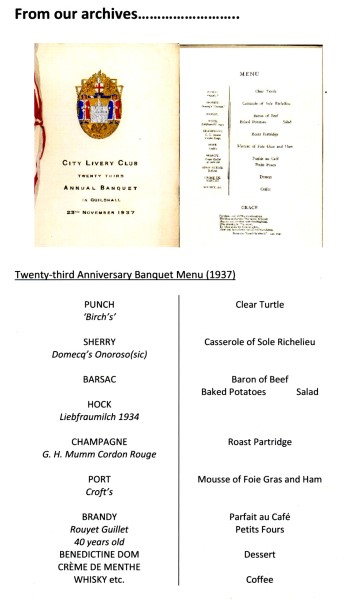
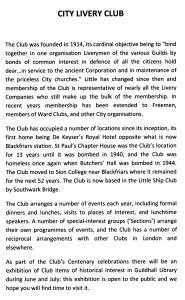
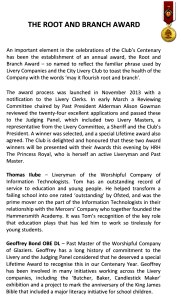
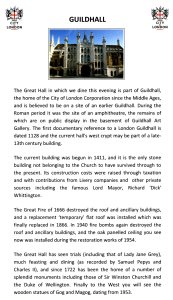
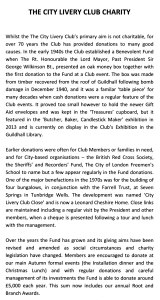
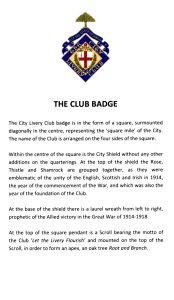
 |
 |

CITY LIVERY CLUB
The Club was founded in 1914, its cardinal objective being
to "bind together in one organisation Liverymen of the various Guilds by
bonds of common interest in defence of all the citizens hold dear...in
service to the ancient Corporation and in maintenance of the priceless City
churches." Little has changed since then and membership of the Club is
representative of nearly all the Livery Companies who still make up the bulk
of the membership. In recent years membership has been extended to Freemen,
members of Ward Clubs, and other City organisations.
The Club has occupied a number of locations since its inception, its first
home being De Keyser's Royal Hotel opposite what is now Blackfriars station.
St Paul's Chapter House was the Club's location for 13 years until it was
bombed in 1940, and the Club was homeless once again when Butchers' Hall was
bombed in 1944. The Club moved to Sion College near Blackfriars where it
remained for the next 52 years. The Club is now based in the Little Ship
Club by Southwark Bridge.
The Club arranges a number of events each year, including formal dinners and
lunches, visits to places of interest, and lunchtime speakers. A number of
special-interest groups (' Sections') arrange their own programmes of
events, and the Club has a number of reciprocal arrangements with other
Clubs in London and elsewhere.
As part of the Club's Centenary celebrations there will be an exhibition of
Club items of historical interest in Guildhall Library during June and July;
this exhibition is open to the public and we hope you will find time to
visit it.

THE ROOT AND BRANCH AWARD
An important element in the celebrations of the Club’s
Centenary has been the establishment of an annual award, the Root and Branch
Award — so named to reflect the familiar phrase used by Livery Companies and
the City Livery Club to toast the health of the Company with the words ‘may
it flourish root and branch’.
The award process was launched in November 2013 with a notification to the
Livery Clerks. In early March a Reviewing Committee chaired by Past
President Alderman Alison Gowman reviewed the twenty-four excellent
applications and passed these to the Judging Panel, which included two
Livery Masters, a representative from the Livery Committee, a Sheriff and
the Club’s President. A winner was selected, and a special Lifetime award
also agreed. The Club is delighted and honoured that these two Award winners
will be presented with their Awards this evening by HRH The Princess Royal,
who is herself an active Liveryman and Past Master.
Thomas Ilube — Liveryman of the Worshipful Company of Information
Technologists. Tom has an outstanding record of service to education and
young people. He helped transform a failing school into one rated
‘outstanding’ by Ofsted, and was the prime mover on the part of the
Information Technologists in their relationship with the Mercers’ Company
who together founded the Hammersmith Academy. It was Tom’s recognition of
the key role that education plays that has led him to work so tirelessly for
young students.
Geoffrey Bond OBE DL — Past Master of the Worshipful Company of Glaziers.
Geoffrey has a long history of commitment to the Livery and the Judging
Panel considered that he deserved a special Lifetime Award to recognise this
in our Centenary Year. Geoffrey has been involved in many initiatives
working across the Livery companies, including the ‘Butcher, Baker,
Candlestick Maker’ exhibition and a project to mark the anniversary of the
King James Bible that included a major literacy initiative for school
children.

GUILDHALL
The Great Hall in which we dine this evening is part of
Guildhall, the home of the City of London Corporation since the Middle Ages,
and is believed to be on a site of an earlier Guildhall. During the Roman
period it was the site of an amphitheatre, the remains of which are on
public display in the basement of Guildhall Art Gallery. The first
documentary reference to a London Guildhall is dated 1128 and the current
hall west crypt may be part of a late- 13th century building.
The current building was begun in 1411, and it is the only stone building
not belonging to the Church to have survived through to the present. Its
construction costs were raised through taxation and with contributions from
Livery companies and other private sources including the famous Lord Mayor,
Richard ‘Dick’ Whittington.
The Great Fire of 1666 destroyed the roof and ancillary buildings, and a
replacement ‘temporary’ flat roof was installed which was finally replaced
in 1866. In 1940 fire bombs again destroyed the roof and ancillary
buildings, and the oak panelled ceiling you see now was installed during the
restoration works of 1954.
The Great Hall has seen trials (including that of Lady Jane Grey), much
feasting and dining (as recorded by Samuel Pepys and Charles II), and since
1722 has been the home of a number of splendid monuments including those of
Sir Winston Churchill and the Duke of Wellington. Finally to the West you
will see the wooden statues of Gog and Magog, dating from 1953.

THE CITY LIVERY CLUB CHARITY
Whilst the The City Livery Club’s primary aim is not
charitable, for over 70 years the Club has provided donations to many good
causes. In the early 1940s the Club established a Benevolent Fund when The
Rt. Honourable the Lord Mayor, Past President Sir George Wilkinson Bt.,
presented an oak money box together with the first donation to the Fund at a
Club event. The box was made from timber recovered from the roof of
Guildhall following bomb damage in December 1940, and it was a familiar
‘table piece’ for many decades when cash donations were a regular feature of
the Club events. It proved too small however to hold the newer Gift Aid
envelopes and was kept in the ‘Treasures’ cupboard, but it featured in the
‘Butcher, Baker, Candlestick Maker’ exhibition in 2013 and is currently on
display in the Club’s Exhibition in the Guildhall Library.
Earlier donations were often for Club Members or families in need, and for
City-based organisations — the British Red Cross Society, the Sheriffs’ and
Recorders’ Fund, The City of London Freemen’s School to name but a few
appear regularly in the Fund donations. One of the major benefactions in the
1970s was for the building of four bungalows, in conjunction with the
Farrell Trust, at Seven Springs in Tunbridge Wells. The development was
named ‘City Livery Club Close’ and is now a Leonard Cheshire Home. Close
links are maintained including a regular visit by the President and other
members, when a cheque is presented following a tour and lunch with the
management.
Over the years the Fund has grown and its giving aims have been revised and
amended as social circumstances and charity legislation have changed.
Members are encouraged to donate at our main Autumn formal events (the
Installation dinner and the Christmas Lunch) and with regular donations and
careful management of its investments the Fund is able to donate around
£5,000 each year. This sum now includes our annual Root and Branch Awards.

THE CLUB BADGE
The City Livery Club badge is in the form of a square,
surmounted diagonally in the centre, representing the ‘square mile’ of the
City. The name of the Club is arranged on the four sides of the square.
Within the centre of the square is the City Shield without any other
additions on the quarterings. At the top of the shield the Rose, Thistle and
Shamrock are grouped together, as they were emblematic of the unity of the
English, Scottish and Irish in 1914, the year of the commencement of the
War, and which was also the year of the foundation of the Club.
At the base of the shield there is a laurel wreath from left to right,
prophetic of the Allied victory in the Great War of 1914-1918.
At the top of the square pendant is a Scroll bearing the motto of the Club
‘Let the Livery Flourish’ and mounted on the top of the Scroll, in order to
form an apex, an oak tree Root and Branch.

Christmas Luncheon
December 2013, Carpenters' Hall, London
Installation Dinner
October 2009, Saddlers' Hall, London
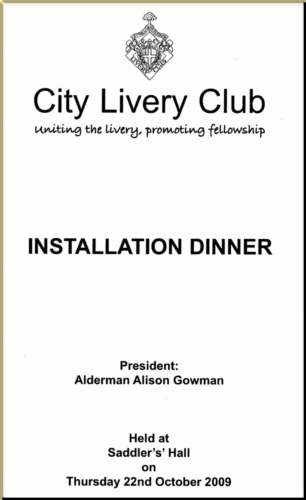
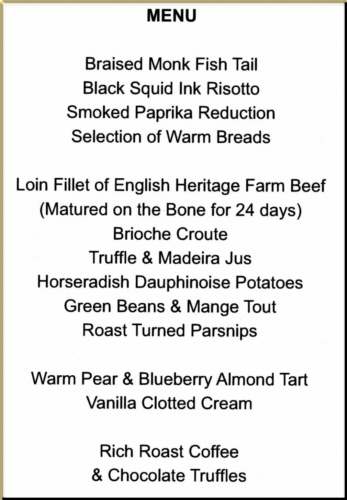
![]()
The City Livery Club
The City Livery Club was originally formed in June 1914
for Liverymen of the City of London but has since expanded its Membership to
include Freemen of Livery Companies, members of the Guild of Freemen,
Society of Young Freemen, members of Ward Clubs, City of London branch
members of The Royal Society of St. George and City of London branch members
of the Institute of Directors who can join as Associate Members
The City Livery Club's purpose is to uphold and strengthen the traditions of
The City Civic; encourage the Livery to exercise its right to elect the
Sheriffs and nominate Aldermen for the Office of Lord Mayor, promote active
participation in the City's governance and foster good fellowship among its
Members.
It achieves these objectives through a varied programme of formal and Social
events; a regular Newsletter and a website, as well as special Interest
Sections including Aero, Bridge, Antiques, Golf, Motoring, Music,
Photography, Tennis and Wine Appreciation, Root & Branch, Gallery and Baltic
Investment Clubs
We are located at the Baltic Exchange, St Mary Axe, close to Liverpool
Street Station, the Club has a luncheon facility available for members and
their guests, together with a Club Office and Members meeting room. The Club
also has reciprocal arrangements with leading Clubs in the UK and Overseas.
![]()
